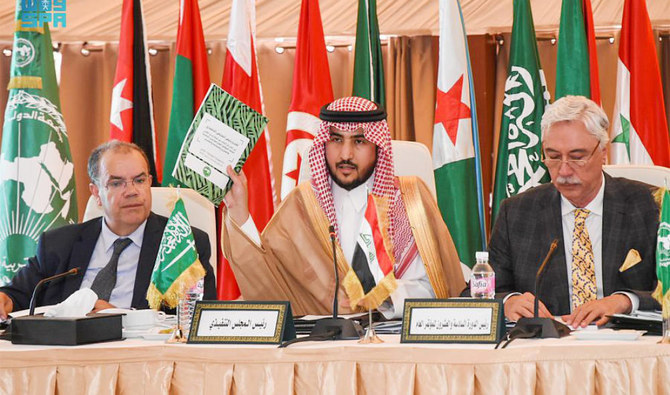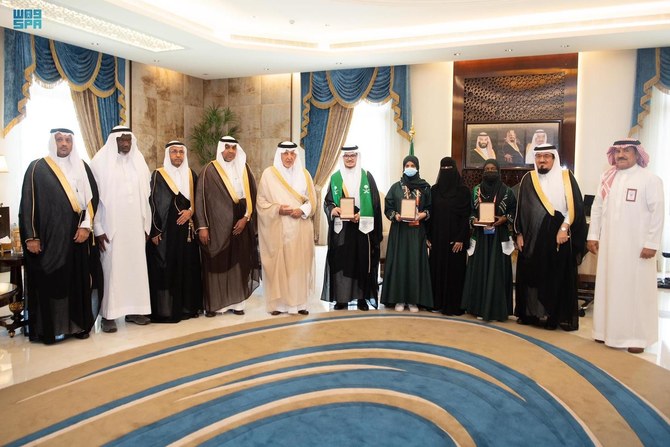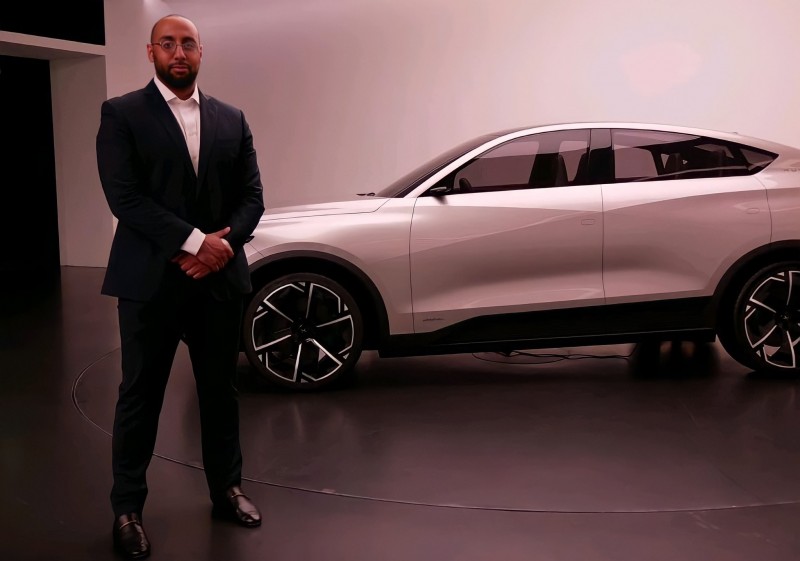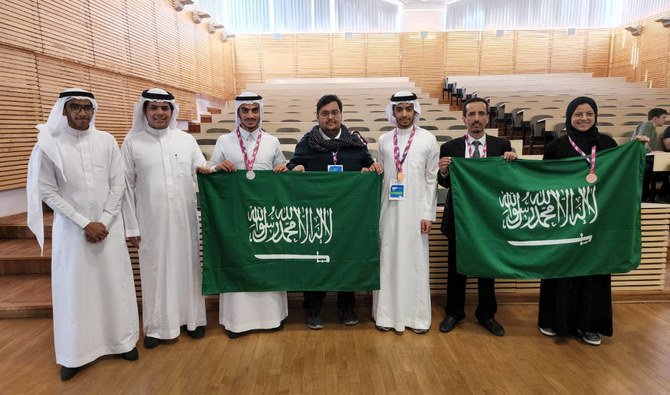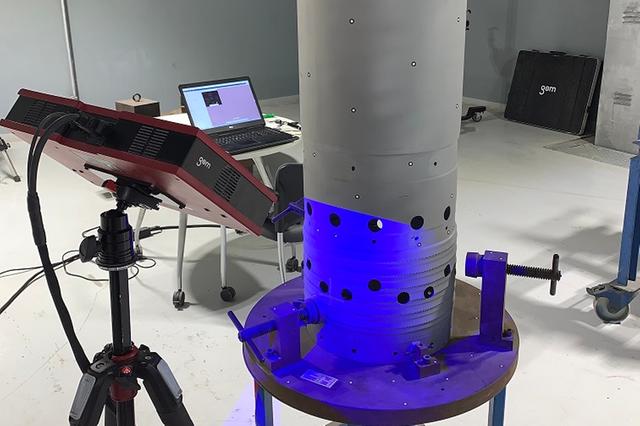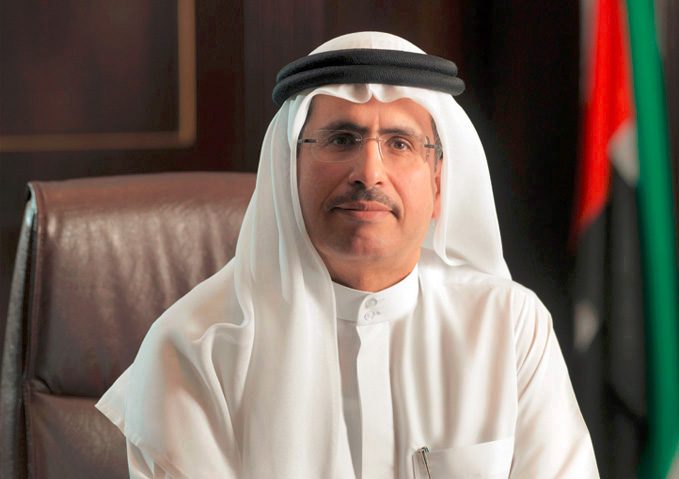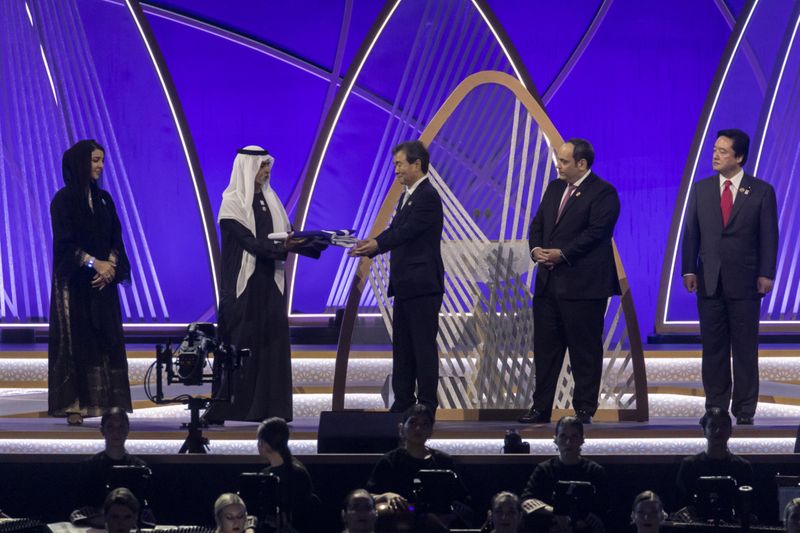Once a creator of skyscrapers, the artist and activist has scaled-down his work – but not his ambitions – to enshrine the calamity in his homeland using elaborate models
The sound of a muezzin exhorting Muslim worshippers to hurry to salvation is not one that could often have been heard within the former Regency church of Holy Trinity in the seaside resort of Brighton.
Right on cue, though, the distinctive chant echoes out, filling every nook and cranny of the 200-year-old building, from the galleries to the arched stained-glass windows and timber-clad chancel at either end.
It comes as Mohamad Hafez is recounting the day he fell under the spell of his birthplace, Damascus, having returned to it as a teenager after a 14-year absence.
“Walking down the old city streets looking at mosques right next to churches, and synagogues next to secular galleries and nude sculptures … I went there from a very conservative culture in Saudi Arabia,” Hafez, 37, tells The National.
“Seeing the bustling city life, with merchants and calls to prayer,” he says, pausing to smile at the perfectly timed adhan issuing out of a loudspeaker hidden in one of his artworks, “and bells ringing together with children playing and the car horns, it was very hard not to fall in love with this collective celebration of diversity.”
The recording of the busy streetscape is clearly audible even over the hustle and hammering of the team assembling Hafez’s ‘Journeys from an Absent Present to a Lost Past’ exhibition in the historic residence of the visual arts organisation Fabrica.
Art handlers wearing blue surgical gloves have already carefully opened the dozen or so timber shipping crates to decant the series of miniature dioramas of his native Syria now hanging on the walls.
Each box was stencilled with FRAGILE in black lettering but the romantic snippets of memories and sounds of a bygone era contained within Framed Nostalgia #3 might arguably have warranted a more strongly worded warning.
It occupies an extra special place in the heart of Hafez — and that of his new wife, Luisa. “That’s the only piece I don’t own,” he says. “It’s owned by her, and I told the guys that if they damage it, they ruin my marriage. Anything else is fair game.”
His immersive process involves the study of photographs of Damascus from before and during the civil war, dimming the lights, brewing Arabic coffee, burning bakhour and incense, and putting on acoustic Middle Eastern music.
What emerges from the induced sentimental state as if, as Hafez puts it, he were a 3D printer are scenes of urban fabric that draw on his training as a corporate architect but come with a political charge.
“I really don’t remember much of the detail, how it comes together,” he says. “It’s a weird feeling. What I enjoy most is that I am discovering this detail as though I am a spectator seeing it for the first time, and that’s very, very fulfilling.”
Frustrated at prevailing narratives, Hafez took a sabbatical from architecture three years ago to focus fully on using his mix of street art, sculpture and activism to respond to thorny issues such as the atrocities in the ongoing conflict or dehumanisation of refugees.
“It is my foot in the door,” he says. “The more the sabbatical continues, the more I’m realising the urgency of the message and sense of agency because there are thousands of architects who can build skyscrapers , thousands.
“But how many of them are Syrian, Arab, Middle Eastern, practising Muslims, raised in Saudi Arabia, educated in the Midwest of the United States, and can talk the talk that will build bridges between people?”
Hafez says the crisis in his homeland has caused a spiritual awakening within him. Which may explain what he was doing on a three-week retreat in Malaysia when he heard news of a concert being held nearby in the capital by the ensemble Al Firdaus that he often listens to in his art studio while working.
Particularly captivated by the cellist Luisa Gutierrez, it wasn’t long before Hafez engineered a visit by Al Firdaus to Yale University, in New Haven, Connecticut, where he is a Silliman College Fellow.
He hosted the ensemble for dinner and invited them to his studio crammed full of paraphernalia, shelves and bins overflowing with scaled-down furniture and toys, dried plants and jewellery, Christmas ornaments and shells, electrical appliance innards and paints.
There, Hafez engaged all the musicians in conversation except for Luisa, who, overwhelmed by the atmosphere, was sitting on a chair staring at the artist’s latest labour of love — Framed Nostalgia #3 — and listening to the evocative audio with tears in her eyes.
“I think what happened is that she clicked into the street scene,” he says. “It’s common for people to come out crying from my exhibitions. Well, fast forward and that became her dowry for our wedding last year.”
Though Hafez was born in Syria, his own tale deviated early on when the family moved to a military compound in Al-Kharj in central Saudi Arabia, where he spent many happy hours supervising the construction of buildings out of whatever he and his playmates could lay their hands on.
Other than the lengthy commute to the elite Najd National School by bus 100 kilometres away in Riyadh, Mohamad never ventured outside the base where his father was head surgeon in the attached hospital.
“There was no need. It was a protected bubble in all respects, and really gave me a true childhood like building forts using found objects. I would boss my friends around, saying ‘No, no, this way, let’s put a window here, you see?’ Twenty years later, I’m going ‘You idiot, you’ve been doing architecture since you were 6 years old.’”
Hafez returned to his birthplace intermittently for holidays that were mostly whiled away in swimming pools, and only properly at the age of 15 when his father took early retirement.
Presided over by his sociable mother, the household became a “cultural salon” that inspired his latest architectural endeavour, Pistachio Cafe , below his studio on the northern shore of Long Island Sound.
It offers the experience of being hosted in what his domicile might have been like, transporting customers with mosaic tables and vintage radios, and bounty made by refugee chefs and cooks such as “the lady who makes shawarma for me from her kitchen at home”.
He is as entranced now with the world’s oldest continuously inhabited city as he was back then when his teenage self would wander its souqs and alleyways with sketch book in hand at any available opportunity.
But for a pupil hitherto accustomed to rubbing shoulders with the upper echelons of Saudi Arabian society, the move to a public school with military uniform and regular training exercises was shocking.
Consequently, Hafez has a deep connection to the words he has spray painted across a vast swathe of black plastic sheeting stretched around several pillars in his exhibition for the Brighton Festival.
This section of “Journeys” replicates the sense of exile felt by those in the refugee and migrant encampment known as the Calais Jungle. Above an evocative stanza borrowed from the Nairobi-born, Somali-British poet Warsan Shire — “No one leaves home unless home is the mouth of a shark” — he has put: I AM JUST A NUMBER.
“I think the whole experience at that school was so traumatic,” he recalls. “I had lost myself. No one cared about ‘What do you want to be?’ I think it’s a big part of me, who I am and why I like working with a lot of universities and high school kids, just to push that fire inside them and make them believe in their intuition.”
The result was that he undertook a course in electrical engineering at Damascus University before following his older siblings to study in the United States when it finally dawned that “every inch of my body was meant to be an architect”.
Hafez would go on to celebrate his first skyscraper at the precocious age of 30, becoming project head designer on an ambitious 48-storey glass and steel office tower in downtown Houston, Texas.
But throughout his studies, a single-entry visa precluded him from visiting Syria because of a travel ban imposed on the citizens of 27 countries after the 9/11 attacks, and later came the Arab uprisings.
Surrounded by the cornfields of Iowa, a homesick Hafez lapsed into depression and was wrought by anxiety. His way of dealing with it, as he explains in ‘A Broken House, the Jimmy Goldblum documentary about his life shortlisted for this year’s Oscars, was deciding that if he couldn’t go home then why not make home?
By night, for a long time, he modelled the destruction of Syria as a sanity-saving outlet to be able to get up and build glistening edifices in his day job with colleagues complaining about the coffee being cold. “‘This is your dilemma right now?’,” Hafez remembers thinking.
It is little wonder that he quotes with conviction the observation of Cesar Cruz, Dean of the Secondary Schools Programme at Harvard, that art should comfort the disturbed and disturb the comfortable.
“With skyscrapers, we design every last detail until the cows come home years before the building sees the light of day. With these,” he gestures around the gallery, “I can break free in my artistic expression. I don’t plan. I work on six or seven pieces at a time so as not to commit too much memory to any one piece, jumping from one to another.”
His store of memories of home is precious and finite. There is no portrait of the four siblings and parents together since 1999, the last time they were all under the same roof. He has been back to Damascus only once, just before the war began in earnest in 2011, when his architectural firm sent Hafez to pitch a project in neighbouring Lebanon.
There has been no other chance to experience the everyday occurrences or family occasions — the funeral of his beloved grandmother, the marriage of a sister, the births that made him an uncle — he has had to miss or risk enforced military service.
Yet, sustained by an inner peace, Hafez conveys hope in person and through the use of verses from the Quran in his art that are intended to counsel patience and raise spirits in dark times.
When asked to translate a particular bit of Arabic script he has incorporated into a scene, he looks gleeful. “Happiness Bakery this way 200 metres,” he explains, laughing. “People have no qualms whatsoever spray painting on a 2,000-year-old wall, putting the advertisement for their shop on a Roman column!”
The humour abounds with graffiti elsewhere saying “I love you”, “Where’s Dad?” and then there’s one in English. Again, it sets Hafez off. “It’s supposed to be ‘No parking’ but with the Arabic accent I’m making fun of our people with ‘No barking please’.”
Accents offer an endless source of amusement to him. One of the consequences of his childhood in the military compound in Saudi Arabia was picking up a multitude of Arabic dialects that Hafez employs on his travels.
“I engage people with their own native dialect, and they go, ‘Whoa, whoa, who are you?’ I love messing with Arabs because nobody can tell that I am Arab. I’m this weird object … I have this curly artist’s moustache, I have a beard, and a little [pony]tail. Then I wear a fancy shirt or a Malaysian garment, and they’re like, ‘Is he Italian? Pakistani? Bosnian? No, he’s Iranian.’”
As a master of misdirection, he concedes that he likes to sneak up on people in the same way that crises do. Audiences are lured in by the beauty of his work, such as Tower of Dreams that features intricate mosaics and floats above a tapestried rug, until the “hot moment when they realise that it looks like an RPG shooting people’s lives and memories into an abyss”.
Perhaps it is the habit of a lifelong outsider but he is also, be warned, a consummate eavesdropper, honing the skill during that side trip to Damascus from Lebanon 12 years ago.
Like a sponge, Hafez took to the streets once again, using his phone to record taxi journeys, calls to prayer, the chattering of locals in cafes that would eventually end up as the multimedia embedded in his works.
“My favourite, favourite, favourite part in everything I do is when I’m a fly on the wall,” he says. “If nobody recognises me around my exhibits, I can just eavesdrop to see how people are reacting. Or you’ll find me in Pistachio Cafe mopping floors, sweeping, putting myself at the service of people, and I observe them enjoying my product, my architectural creation.”
He ends the interview with a short guided tour of his dioramas, pointing out a pleasing crackle or patina here or some rust that has developed there, then stopping at a surveillance camera poking out of one of the facades.
“That’s Big Daddy watching always,” Hafez notes, without the slightest hint of recognition that it would be fair to say much the same of him.
‘Journeys from an Absent Present to a Lost Past’ by Mohamad Hafez is at Fabrica, Brighton, until May 29
http://www.mohamadhafez.com/
source/content : thenationalnews.com (edited)
____________
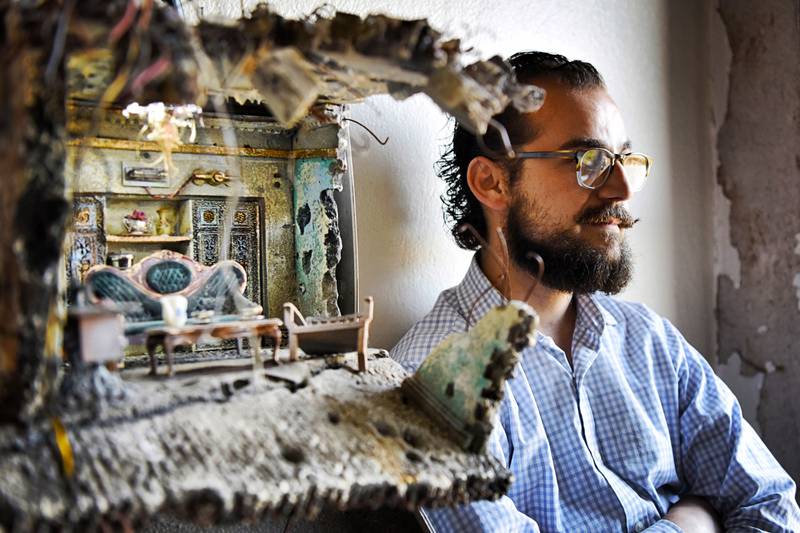
____________________
AMERICAN / SYRIA
